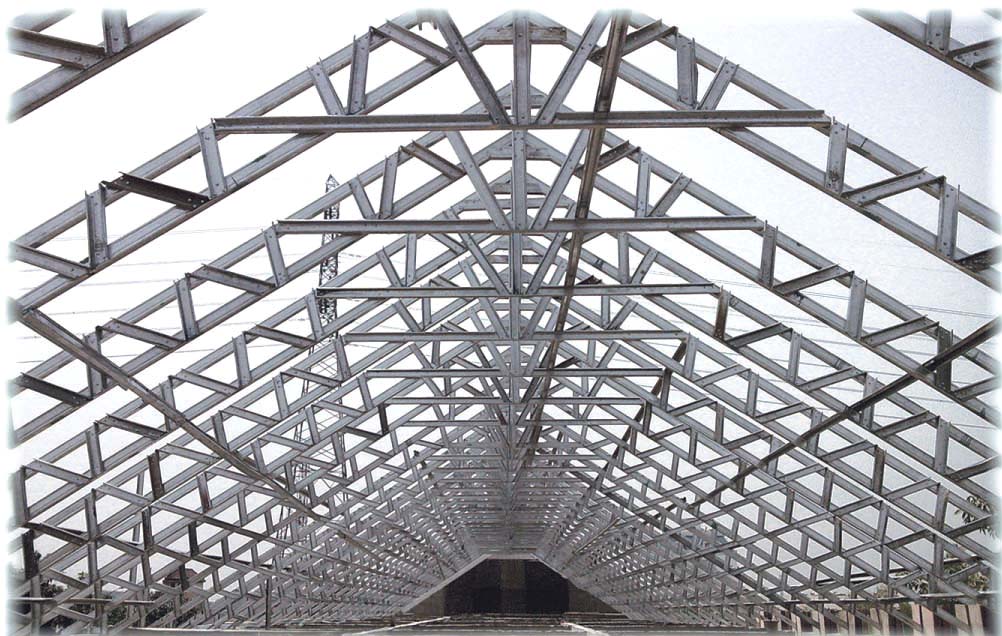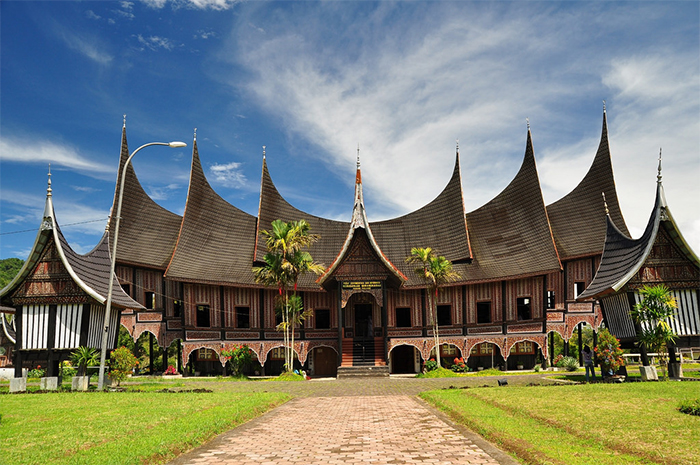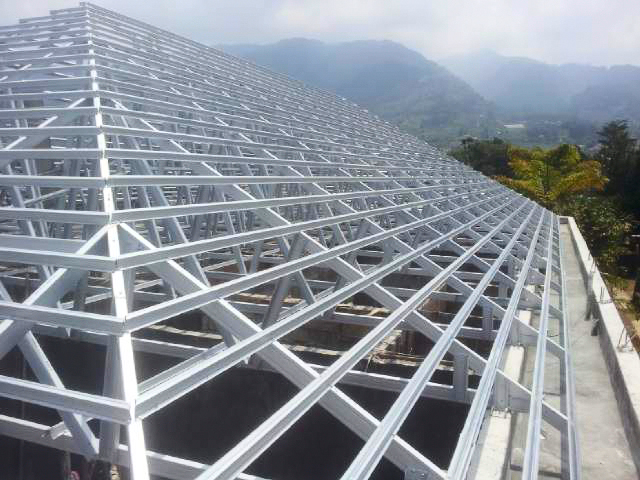Beranda > Artikel
Types and Options of Steel Roofs

The popularity of steel roofs is often due to their flexibility, wide variety of options, and the ability to be adapted for each individual structure, which includes color, shape, style, and more.
Types of Steel Roofing Materials
Steel is a very broad term for roofing, especially since there are nearly 100 metals on the periodic table of elements. Some of the most commonly used steel roofing materials in industry are:
- Galvalume coated steel
- Galvanized steel
- Stainless steel
- Aluminum
- Zincalume steel
- Copper
All of these metals are good choices, but there are distinct drawbacks and advantages associated with each. Make sure you read the metal roofing material options to determine what is best for your location, style and needs.
Steel Roof Panel Style
1. Standing Seam
Standing seam metaling refers to metal panels that are intertwined at the edges to form a seam, which stands vertically. A true Standing Seam system uses a hidden fastening method of fixing, which means clips and fasteners are hidden under the surface and out of sight of the naked eye. This is what sets it apart from all other metal roofing. Steel roofs of this type are considered to be the superior and better protected option when compared to exposed bonding metal roofs.
2. Exposed Fastener
Steel roof exposed fasteners, considered a cheaper and more economical option, are installed with the fastening heads visible at the top of the panels. When the exposed roof straps are installed, the straps will directly penetrate the metal and enter the roof deck. Classically exposed fasteners have been used in agricultural or industrial applications.
3. Profile Stamped
If you like the look of tile or a more textured surface but still want the longevity, cost and durability of steel offering, it's possible with profiled metal tile. There are many shape options to choose from, including:
- It's wavy
- Shingle roof
- Roof tiles
Steel Roof Panel Connection Type
1. Snap-lock
Metal roof panels that have been carefully rollformed with the edges of specific panel profiles that stick together and require no hand or mechanical stitching during installation. Lock seam seams tend to be a little more popular in the roofing industry because they are engineered to defend against the elements while making installation a little easier on contractors.
2. Mechanical Seam
Mechanical seam panels are also rollformed with specific edges parallel to each other in the roof. After the two edges are joined, a hand or mechanical seamer is used to bend the edges and lock the panels together. The joints that are locked resemble the shape of a paper clip. There are two types of mechanical seaming:
Single Lock / 90 degree joint - One fold connection
Double lock / 180 degree splice– Two pleat joints
3. Tee panel
A type of standing joint in which two panel edges are joined and connected at the top with a cap, which are then mechanically fixed in place to lock the panels together. After the seaming is complete, the top of the joint stands in a “T” shape.
4. Exposed Fastener Lap Seam
Exposure lap seam is when the overlapping edges of the lap panel are fastened to the deck from the top of the panel.
5. Steel Roof Panel Rib Panels
Rib rollers are "patterns" or striations rollformed into steel roof panels between layers. It can be used to aid in mounting a steel roof or simply for curb appeal. Common rib rollers include:
- Flat - No indentation between joints
- Ribbed - Multiple shapes or grooves between joints
- V-Ribs - indented "V" shaped panels
- Bead - Indents longer rectangular panels
- Pencil - Curved circular panels
- Striated - Consistent small indent lines on the panels (can help reduce oil canning)
- Wavy - Waves a larger and more constant metal panel
- Clip relief - Rigid ribs adjacent to the joint that allow room for clips
Steel roof thickness
Metal coils rolled into panels for steel roofing come in a variety of thicknesses. We will discuss the disadvantages and disadvantages of different panel thicknesses in future articles. Standing seam metal roofs come in a variety of thicknesses (usually between 22 and 26 gauge) with the most common steel thickness being 24 gauge and aluminum between 0.032 and 0.040 inch. For facial fixing systems, 26 or 29 gauge materials are usually used.
Color and Steel Roof Coverings
Having control over the color and overall appearance of your structure is one of the most attractive parts of choosing a steel roof. Due to the growing demand for bright and earthy colors in roofing systems, paint companies, such as ColorBond, are creating tested and proven paint systems that add style to home exteriors while still reducing chalk, fading, chipping and other colors. In addition to each color in the rainbow being a steel roofing option, you can even custom order the finish of your choice. If you want a blue roof with a matte finish, that's possible. Or if you want a red roof with a glossy finish, that's also possible.
 Bahasa Indonesia
Bahasa Indonesia  Inggris
Inggris
 Bahasa Indonesia
Bahasa Indonesia  Inggris
Inggris
 Bahasa Indonesia
Bahasa Indonesia  Inggris
Inggris
 The popularity of steel roofs is often due to their flexibility, wide variety of options, and the ability to be adapted for each individual structure, which includes color, shape, style, and more.
The popularity of steel roofs is often due to their flexibility, wide variety of options, and the ability to be adapted for each individual structure, which includes color, shape, style, and more.




